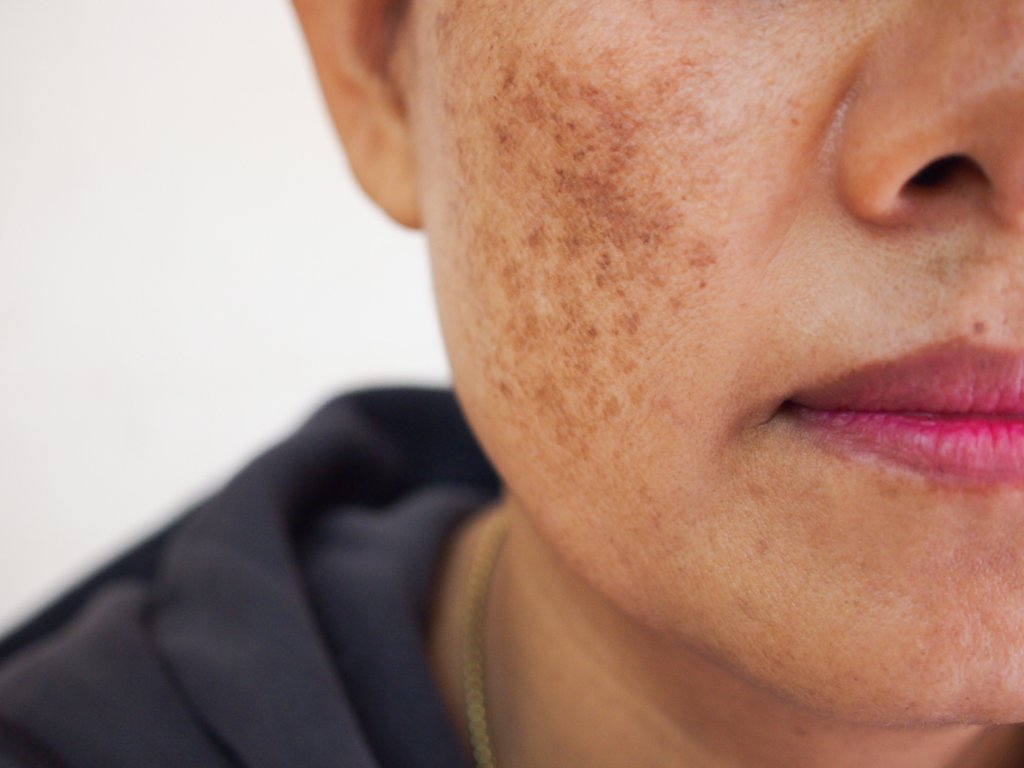Melasma is a form of hyperpigmentation. Dark brown spots appear on the skin, which is usually irregular in shape. You mainly see melasma in women. The pigmentation spots often flare up during pregnancy; you have probably heard of the term pregnancy mask. What exactly can you do about it? Focus on here to know more about melasma.
Causes of Melasma
The exact cause of melasma is not known, but it is clear that melasma has a hypersensitive pigment system. The following factors can lead to increased activity of the pigment cells:
– Arising or triggered by pregnancy
– Artificial UV radiation
– The use of contraception -> (the brands Marvelon, Microgynon and Diane 35 and Milena spiral have even been associated with the occurrence of melasma!)
– Heredity
– The use of certain cosmetics
– The use of some anti-epileptic drugs (read the package insert for your medication carefully! There are antidepressants that are classified as anti-epileptic drugs!)
Risk Factors
Women who take birth control pills, hormone replacement therapy, and certain drugs are at greater risk of developing melasma. Staying in the sun for too long is a major risk factor. People with dark skin are also more likely to get melasma.
How Common Is It and Who Gets It?
How often melasma occurs in 2021 is unknown. It is more common in women than men and is rarely seen before puberty. Melasma occurs in about 25 percent of cases during pregnancy.
Melasma Symptoms:
- irregular dark brown spots
- Pigment spots
Melasma, besides skin discoloration, does not cause any other symptoms. The dark pigmentation spots mainly occur on the forehead, the skin over the cheekbones, the upper lip, the nose and the chin. It is usually symmetrical.
Face
Melasma, principally on the face, is characterized by discoloration or hyperpigmentation. In melasma, three forms of common facial patterns were identified:
- Centro facial (center of the face)
- malar (cheekbones)
- mandible (jaw bone)
The most common form of melasma is the dentofacial pattern and includes the forehead, cheeks, upper lip, nose, and chin. The malar pattern covers the upper part of the cheeks. The mandibular pattern is specifically found on the jaw.
Neck, neck and forearms
The tops of the neck and neck are less often involved in melasma. Only rarely does melasma occur on other parts of the body such as the forearms.
Disturbed Pigment Formation
Pigment, also called melanin, is a brown colorant produced by the skin. If melanin is produced evenly, you will get an even brown color. But if this process is disrupted, for example by hormones, pigmentation spots can develop.
Different Types of Melasma
We distinguish different forms of melasma; a deep and a more superficial shape. Melasma that is superficial, so only in the epidermis, are often brown in color and fairly easy to treat. Deeper pigment spots can be recognized by a more gray-blue color; these are a lot more persistent.
Not A Real Cure for Melasma Yet
There is no real medicine yet that addresses the cause of melasma. Treatments are mainly aimed at reducing the brown spots. In addition, you can do a lot yourself to prevent the pigmentation spots from getting worse.
Use Sun Protection Every Day
To start with, protect yourself well from the sun, otherwise, you will be mopping with the tap open anyway. Preferably use a sunscreen with a sufficiently high factor such as the Suncare SPF 30 every day. On sunny days it is important to lubricate your skin every hour, we really recommend every two hours. Don’t forget your neck.
In addition, choose care products with active ingredients that can lighten your pigmentation spots, such as vitamin C in combination with E and niacinamide. You will also find licorice root extract in products for normal to oily skin. This ingredient calms and protects, but also helps with superficial pigmentation spots.
If your skin is not sensitive, you can also use an Exfoliant with glycolic acid. Check-in advance whether the product suits your skin type.
Medicines for Melasma
Do you suffer from pigmentation spots a lot? Depending on the form and type of melasma, a doctor can prescribe medication in the form of a cream with hydroquinone or azelaic acid.
There is also a so-called triple cream; hydroquinone or azelaic acid, in combination with vitamin A acid and hydrocortisone. This can lighten your pigmentation spots. It is important to use the products with care. Especially if your skin is sensitive, build-up use very carefully.
 HammBurg Be informed with latest news, reviews, entertainment, lifestyle tips, and much more.
HammBurg Be informed with latest news, reviews, entertainment, lifestyle tips, and much more.




